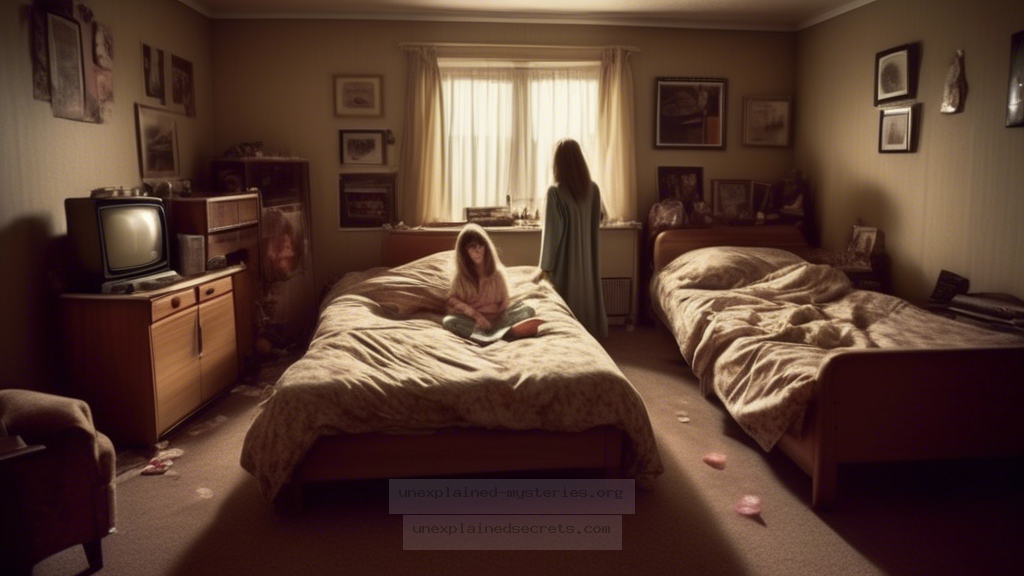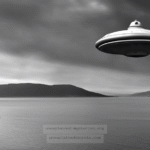What Caused the Infamous 1980s “The Enfield Poltergeist” Phenomena?
What Caused the Infamous 1980s “The Enfield Poltergeist” Phenomena?
The Enfield Poltergeist case remains one of the most compelling and debated examples of paranormal phenomena in modern history. Occurring in a modest home in Enfield, North London, during the late 1970s and early 1980s, this incident involved a series of bizarre occurrences, including unexplained noises, furniture moving on its own, and even physical attacks on family members. What makes this case particularly intriguing is the intense scrutiny it faced from investigators and skeptics alike, as well as its impact on popular culture. Understanding the Enfield Poltergeist provides valuable insights into the nature of poltergeist activity, challenges our perception of reality, and raises questions about the legitimacy of paranormal investigations.
The Historical Context of the Enfield Poltergeist
The Enfield case began in August 1977 when single mother Peggy Hodgson and her four children—Margaret, Janet, Billy, and Johnny—reported strange occurrences in their home. The family initially dismissed the sounds as mere disturbances, but as the phenomena escalated, they could no longer ignore it. Items would fly across the room, the children claimed to hear voices, and one of the daughters, Janet, was allegedly seen levitating. The reports garnered attention from the media and paranormal investigators, making this case one of the most publicized in history.
The significance of the Enfield Poltergeist case is amplified by its timing; the late 1970s was a period ripe for interest in the paranormal, fueled by popular television shows and films exploring supernatural themes. The Hodgson family’s plight resonated with a broader cultural fascination with ghosts and the unexplained, making their story a focal point for both believers and skeptics.
Core Concepts of the Poltergeist Phenomenon
Poltergeist activity typically involves unexplained physical phenomena, such as objects moving, unusual noises, and sometimes even physical manifestations like apparitions. The term “poltergeist,” derived from the German words “poltern” (to make noise) and “geist” (ghost), suggests that these entities may be more mischievous than malicious. Many researchers categorize poltergeist phenomena as a type of psychokinesis, where mental energy is purportedly responsible for the manifestations.
In the case of Enfield, Janet Hodgson became the focal point of the activity, leading some investigators to suggest that her emotional state may have been a catalyst for the disturbances. According to the theories of parapsychology, particularly those proposed by researchers like William Roll, poltergeist phenomena often manifest during periods of stress or emotional turmoil, particularly in adolescents. This raises questions about whether the phenomena were genuinely paranormal or a projection of the family’s emotional state.
Noteworthy Investigations: The Role of the Society for Psychical Research
The Society for Psychical Research (SPR) sent investigators to the Hodgson home, including notable figures like Maurice Grosse and Guy Lyon Playfair. The SPR’s involvement added credibility to the case, as they meticulously documented the events, conducting interviews and collecting evidence. Their reports detailed various incidents, including objects being thrown, unexplained knocking sounds, and direct communication with the entity claiming to be “Bill,” a deceased former resident of the house.
One of the most famous pieces of evidence gathered was a series of audio recordings capturing the voice of the alleged poltergeist, which spoke through Janet, providing chilling insights into its character. Grosse and Playfair’s thorough approach included the use of video and audio equipment, which was pioneering for the time, leading to a wealth of material for both supporters and skeptics to analyze.
Analyzing the Evidence: What Was Captured?
Throughout the investigation, numerous pieces of evidence were collected, including photographs, audio recordings, and documented testimonies. Investigators captured images of objects in mid-air and recorded strange sounds, leading many to believe there was a genuine paranormal presence. However, skeptics pointed to the possibility of hoaxes, particularly as the family gained media attention.
💡 Key Evidence from the Enfield Case:
- Audio recordings featuring the voice of the poltergeist.
- Photographic evidence of objects in motion.
- Witness testimonies from both family members and investigators.
Alternative Perspectives: Skepticism and the Hoax Theory
Despite the compelling nature of the evidence, the Enfield Poltergeist case has faced substantial skepticism. Critics argue that the phenomena could be attributed to the children, particularly Janet, who was often at the center of the activity. Some skeptics claim that the family may have exaggerated or fabricated experiences for attention and financial gain, especially given the media frenzy surrounding their story.
Notably, a 1980 article in “The Times” by journalist David Clarke posited that the Hodgsons’ behavior could be explained by psychological factors rather than paranormal activity. This perspective emphasizes the need for critical thinking in the face of sensational claims and highlights the importance of distinguishing between genuine phenomena and potential deceit.
Common Misconceptions and Clarifications
One prevalent misconception about poltergeist activity is that it always involves malicious spirits. In reality, many poltergeist phenomena are benign or even playful. Furthermore, the association of poltergeists with teenage girls is often oversimplified; while Janet was instrumental in the Enfield case, poltergeist activity can occur in various contexts and demographic groups.
Another misconception is the idea that all evidence of paranormal phenomena is irrefutable. In the case of Enfield, while some evidence appears compelling, much remains open to interpretation and debate, necessitating a cautious approach to claims of the supernatural.
Best Practices for Investigating Paranormal Activity
For those intrigued by paranormal phenomena and interested in investigation, several best practices can enhance the credibility of findings:
- Document everything: Thoroughly record all incidents, including dates, times, and descriptions.
- Use reliable equipment: Invest in quality audio and video recording devices to capture evidence.
- Engage with a team: Collaborate with other investigators to gather diverse perspectives and insights.
- Maintain skepticism: Approach all claims critically, and be open to alternative explanations.
- Respect the environment: Always prioritize the safety and privacy of individuals involved.
Future Developments: Ongoing Research in Poltergeist Phenomena
The Enfield Poltergeist case continues to inspire researchers in the field of paranormal studies. Ongoing investigations into poltergeist activity have evolved with advancements in technology, including the use of electromagnetic field (EMF) meters, infrared cameras, and even smartphone applications designed for ghost hunting. Researchers are also exploring psychological and environmental factors that may contribute to these phenomena, thus bridging the gap between scientific inquiry and paranormal investigation.
Moreover, the increasing popularity of paranormal television shows has sparked public interest, prompting many to explore the mysteries surrounding poltergeists and other supernatural phenomena. As the field continues to grow, collaboration between scientists, psychologists, and paranormal investigators may yield valuable insights into the nature of these unexplained events.
Conclusion: The Legacy of the Enfield Poltergeist
The Enfield Poltergeist remains a captivating enigma that challenges our understanding of reality and the unseen forces that may inhabit our world. While the evidence is both compelling and controversial, the case serves as a reminder of the complexity of human experience and the mysteries that still await exploration. Whether viewed through a skeptical lens or a belief in the supernatural, the Enfield case continues to intrigue and inspire, proving that while we may never fully understand the nature of poltergeist phenomena, the quest for answers is a journey worth undertaking.
Other Articles
What Really Happened During the 1967 Shag Harbour UFO Incident?
Recent Posts
- What Happened to Flight MH370? The Conspiracy Theories That Still Haunt Us
- What Secrets Lurk Within the Walls of the Infamous Trans-Allegheny Lunatic Asylum?
- What Evidence Supports the Existence of Bigfoot in the Pacific Northwest?
- What Happened to the Indus Valley Civilization? Unraveling the Mysteries of Ancient Urban Life
- Can Telepathy Be Scientifically Proven Through Laboratory Evidence?







